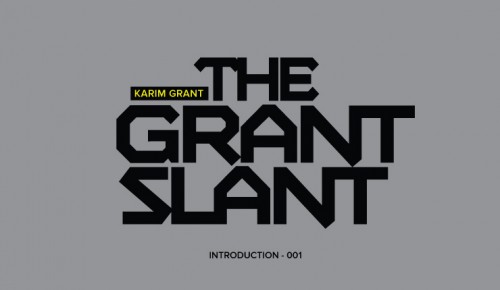“Either you’re slingin’ crack-rock or you got a wicked jump-shot.” – The Notorious B.I.G. “Things Done Changed”
Since its inception, the cultures of sports and hip-hop have been seamlessly meshed and intertwined together like first cousins. You know, the cousin you’d make sure everyone knew was your actual sibling because the both of you were so inseparable. Like two peas in a pod or two birds of a feather; the connection is real.
The examples are plenty, like Kurtis Blow’s “Basketball” to the rappers like The Game, Lil Wayne and Drake who routinely name-drop your favourite athlete in their verses and rhymes. Hip-hop and sports seem to be a match made in urban diasporic heaven.
“Basketball is my favourite sport / I like the way they dribble up and down the court / Just like I’m the king on the microphone, so is Dr. J and Moses Malone / I like slam dunks, take me to the hoop / My favourite play is the alley-oop / I like the pick-and-roll, I like the give-and-go / ’Cause it’s basketball, uh, Mister Kurtis Blow.” – Kurtis Blow, “Basketball”
[Rap music] represented every bit of angst and frustration caused by poverty, drugs, crime and violence that manifested itself in the urban cities of North America. I lived it. Walked it.
Talked it. Having spent my formative years in the crack-infused, jheri-curled dripped, short-short showtime era of the National Basketball Association ’80s, I was drawn to likes of the effervescent personality of Earvin “Magic” Johnson and the awe-inspiring athletic feats of Dominique Wilkins and Michael Jordan. They were larger than life. They ran the fast break, gave no-look passes, dunked on the odd peasant and most of all had an undeniable swagger.
That same boastfulness was present in another segment of the entertainment industry. A quickly blossoming art form called rap music. Since its birth, it rapidly grew into a “voice for the voice-less, and a choice for the choice-less.” It represented every bit of angst and frustration caused by poverty, drugs, crime and violence that manifested itself in the urban cities of North America. I lived it. Walked it. Talked it.
“Feeling guilty, what would momma think about me? / Told ’em, think about it, nigga, won’t you think about it now? / But he was money hungry, plus he trigger happy / So they hopped up in the Caddy, burners packed just like a stadium / Thirty minutes later, blood is leaking at the ATM / Momma in denial, like her baby boy on trial / For a murder that he ain’t commit / Tears soak the handkerchief.” – J. Cole, “Cold Blood”
For young, black men in North America, they were able see people that looked exactly like them on television, in magazines and on billboards effortlessly making their professions seem plausible, attainable and something that boasted great pride in their communities.
With their gold rope chains, shell-toe Adidas, black Gazelle frames and unmistakable black Kangol hats, it’s pretty safe to say that Rev Run, DMC and Jam Master Jay started this thing we now call swagger. I’d be remised if I didn’t mention Slick Rick the Ruler in that conversation as well. This visceral strut permeated itself into professional leagues such as the NBA and the NFL, and before long, professional athletes began dressing like rappers, hustlers and local pimps. It was a marriage that made no bones about its union. For young, black men in North America, they were able see people that looked exactly like them on television, in magazines and on billboards effortlessly making their professions seem plausible, attainable and something that boasted great pride in their communities.
I knew that hip-hop as a culture and rap as a genre of music was here to stay when I watched for the first time, 250 lb grown men dancing and rapping to what was labeled the “Super Bowl Shuffle”. The Chicago Bears had made an improbable run to the Super Bowl in 1986, and felt the need to create a video to encapsulate their season and love for this burgeoning art form called rap. The result was the “Super Bowl Shuffle”, a song that if played now would undoubtedly be panned and laughed off as ridiculous, but in ’86 was more than par for the course, it was actually a hit.
From Deion Sanders to Shaquille O’Neal to Kobe Bryant and Iman Schumpert, athletes have tried their hands at putting rhyming words together against infectious snares and chest-thumping bass lines. On the flipside, there’s been no shortage of rappers making the leap into the realm of professional sports and local celebrity charity games, i.e. Master P and Snoop Dogg.
Regardless, the two cultures are carbon copies and mirror images of each other – perhaps not in the physical and literal sense, however, in their ability to allow the average urban youth to express themselves through music and athleticism.
Unfortunately, most of these attempts into uncharted waters were met with severe criticism and short-lived careers. Regardless, the two cultures are carbon copies and mirror images of each other – perhaps not in the physical and literal sense, however, in their ability to allow the average urban youth to express themselves through music and athleticism. Every drive, dive and charge taken by Allen Iverson spoke volumes to his undeniable focus, dedication and hustle. His cornrows, tattoos, gold chains and bad-boy persona represented hip-hop. His game spoke to us like Nas’ Illmatic or Jay-Z’s Reasonable Doubt. Call him what you want, street, hood or thug; he was hip-hop. Everything I am and everything I do is partly because of sports and hip-hop, its correlation will allow me the opportunity to demonstrate its existence on a bi-weekly basis through this space that has been auspiciously granted to me. Come with me.
“Went from most hated to the champion God flow / I guess that’s a feeling only me and LeBron know.” – Kanye West “New God Flow”
@NorthernKingz




Comments are closed.